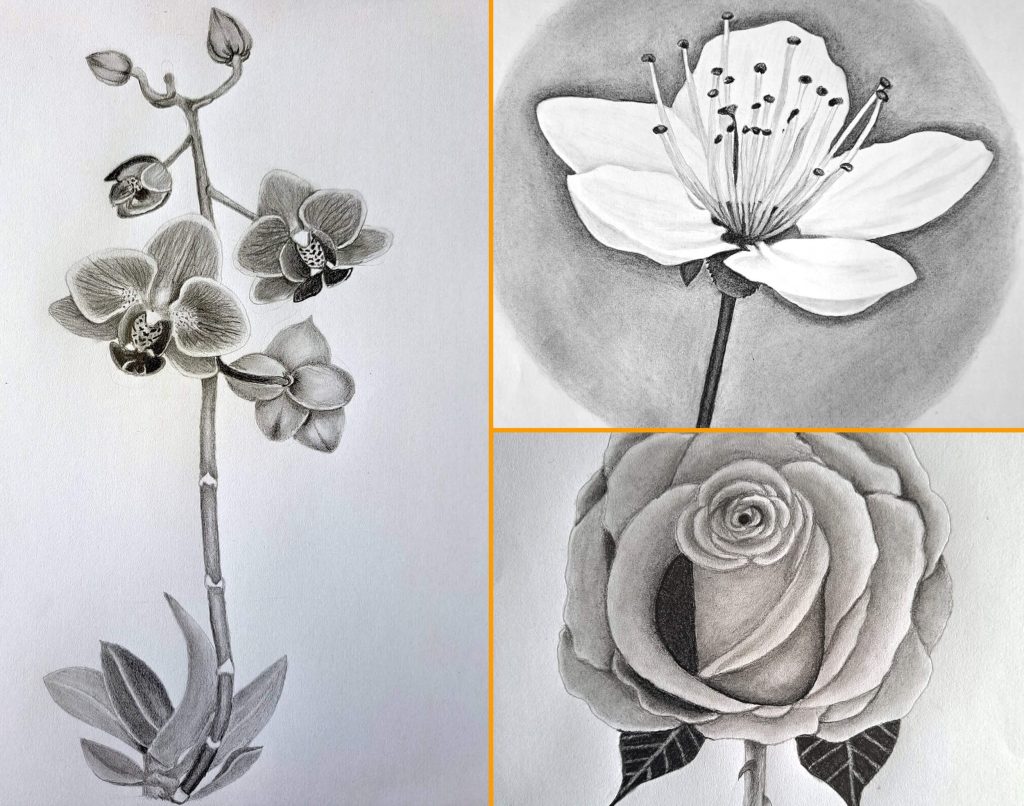This is a roundup post for those looking for interesting flower drawing ideas in one place. We’ll learn to draw virtually all known flowers using graphite pencils in a few years. That means I’ll keep updating this post frequently with new drawing tutorials.
So, it would be helpful for you to bookmark this post for future reference so you don’t miss any of the updates.
How to Draw Different Types of Flowers Easily
Roses
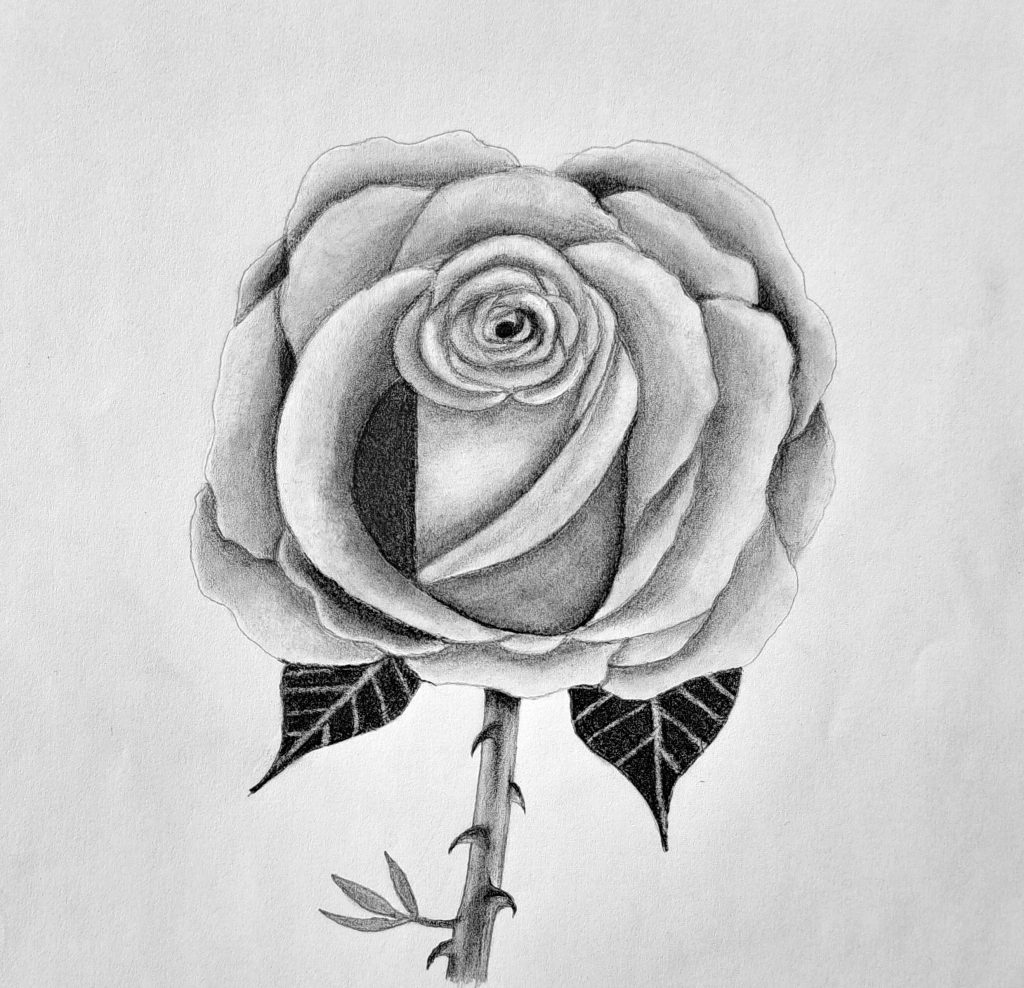
If you’ve been looking for an easy guide to help you learn how to draw a rose, then you need to read this post! To get the most out of it, grab your range of graphite pencils, a piece of paper, an eraser, and a blending stump, and follow along!
I have outlined seven easy steps to guarantee that even a 7-year-old can follow along and draw a realistic rose without sweating it out.
However, don’t feel bad if your final piece doesn’t look exactly like mine. With time and practice, you’ll be so much better at it, I promise.
Cherry Blossoms – Sakura
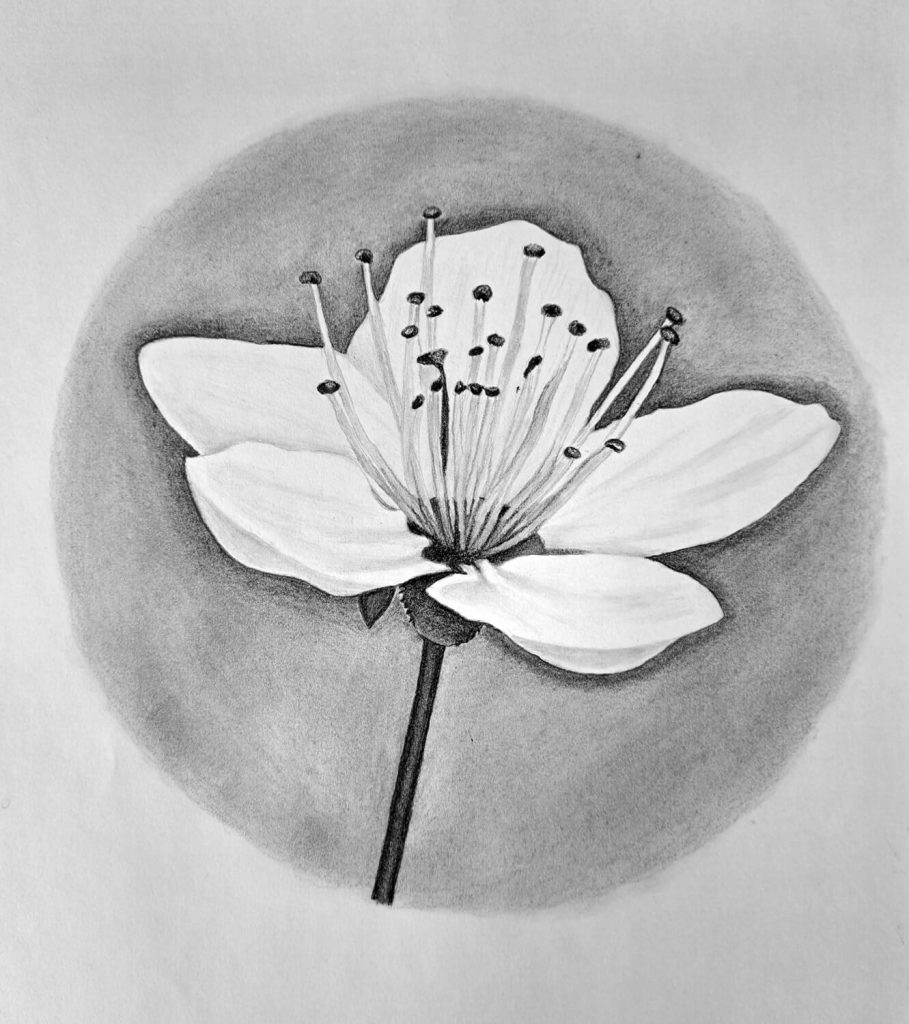
Cherry blossoms, or Sakura, are some of the most gorgeous flowers celebrated for their beauty. These blooms are prized for their delicate, white or pink, short-lived flowers.
Talk of scarcity adding value.
Because they bloom for only a short period of time, they teach us a very important lesson: the fleeting nature of life.
As artists, we need to appreciate the background story behind our subjects. Otherwise, why does it even matter?
Enough said.
Here’s a step-by-step guide on how to draw them.
Orchids

In my experience, drawing an orchid realistically requires understanding its morphology. Besides, you’ll be able to focus on specific parts rather than the whole, making the whole process less daunting, especially if you’re a beginner.
Again, I’m not asking you to become a botanist. You just need to learn to look at one aspect of the flower at a time, draw that, and move to the next.
This post is about drawing a moth orchid, which is pretty standard in most households. These orchids have two lateral petals (left and right) that are almost identical, a dorsal sepal (top), two lateral sepals (bottom left and right), and a mid-section comprising the column and labellum or lip, Etc.
In other words, representative drawing requires a clear understanding of the subject or its reference photo.
Cosmos Flowers
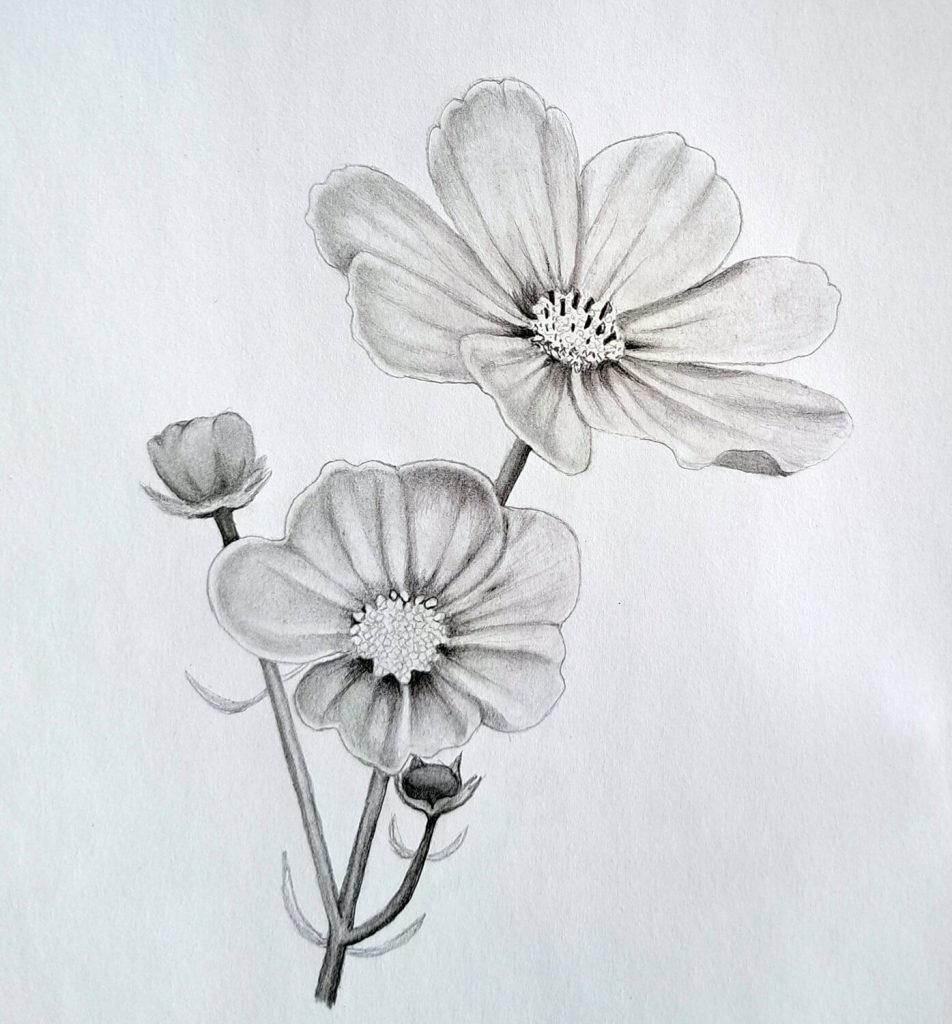
Whenever I have an artist’s block and am unable to find any drawing inspiration or ideas, I always turn to drawing flowers. There are countless amounts of them existing in nature and as such, you’re likely to find one that gets you in the mood.
Today, I just happened to be in the same situation and cosmos flowers came to my mind. This flower is one of my all-time favorites, busting with colors that range from pink, orange, red, and yellow.
This easy tutorial explains my process.
Sunflowers
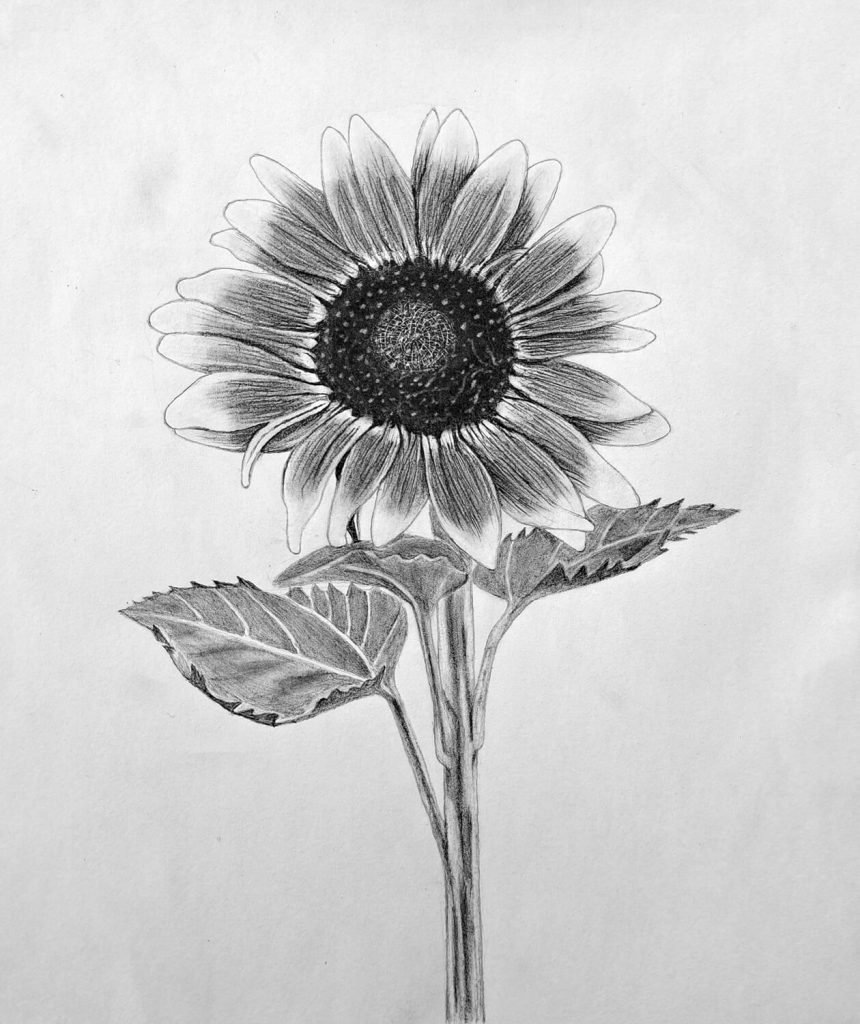
They are as bright and cheery as the sun. But that’s not the reason behind their name. Apparently, the young sunflowers love basking in the sun and move to face it all day long!
That’s quite fascinating if you ask me.
It’s believed that these remarkable flowers symbolize loyalty and adoration. While thinking of sunflowers ring their big, distinct yellow petals and a brown center, there are quite a variety of colors.
This diversity is what inspired me to draw a rather unconventional sunflower called Ring of Fire Sunflower. It is a five-inch sunflower having golden petal edges and a ring of red surrounding the chocolate brown center.
I hope you’re as excited as I am to draw this gorgeous flower.
Peony
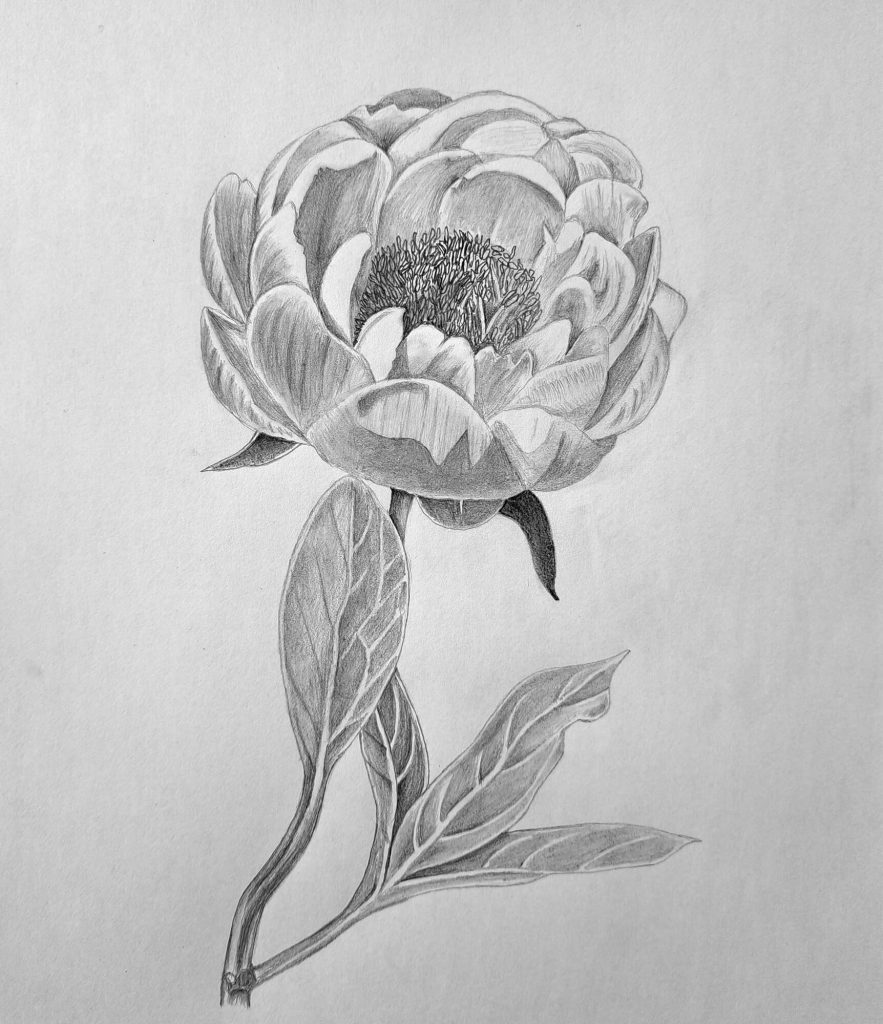
The peony is one of the most beautiful and elegant flowers, known for its lush, ruffled petals and intricate details. Drawing a realistic peony may seem challenging at first but with the right approach, you can create a stunning floral sketch.
In this tutorial, we’ll break the process into simple, easy-to-follow steps, guiding you from basic sketch to fine shading details. Whether you’re a beginner or looking to refine your floral drawing skills, this guide will help you bring your peony to life with shading and texture techniques.
Hibiscus Flowers
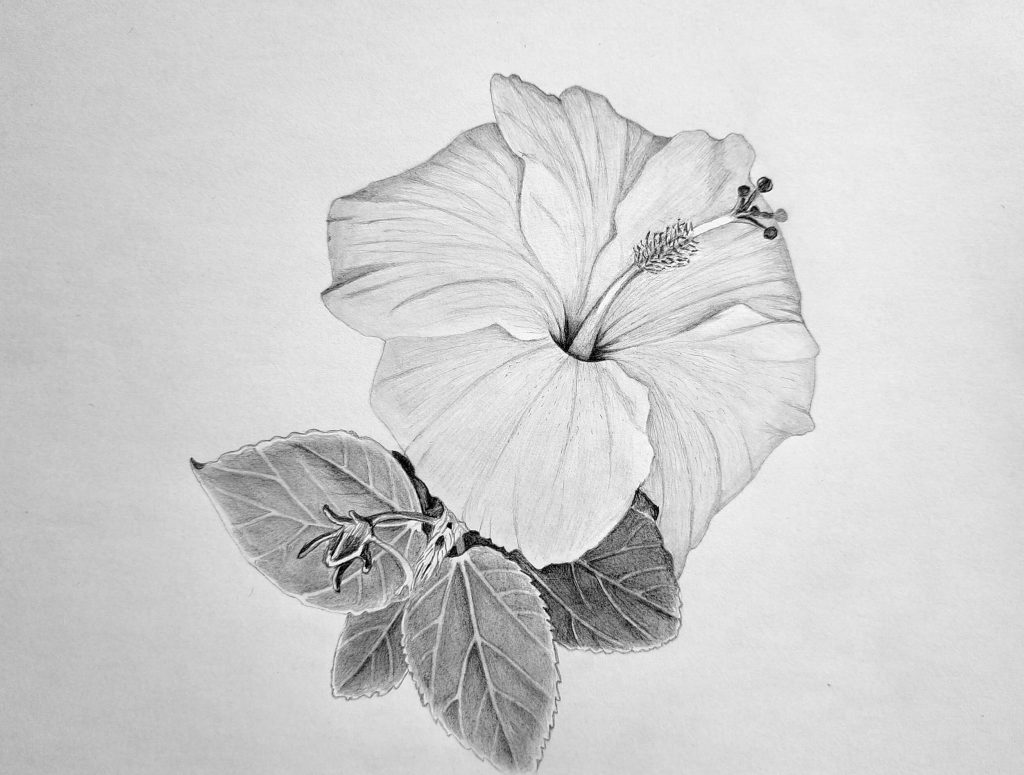
I used to think drawing flowers meant tiny, perfect petals and botanical-illustration-level precision.
Hibiscus flowers especially felt intimidating with their big, showy petals and that dramatic center.
But once I actually sat down and started sketching one (after way too much procrastination), I realized it wasn’t as complicated as it looked.
The trick?
Lily Flower Drawing
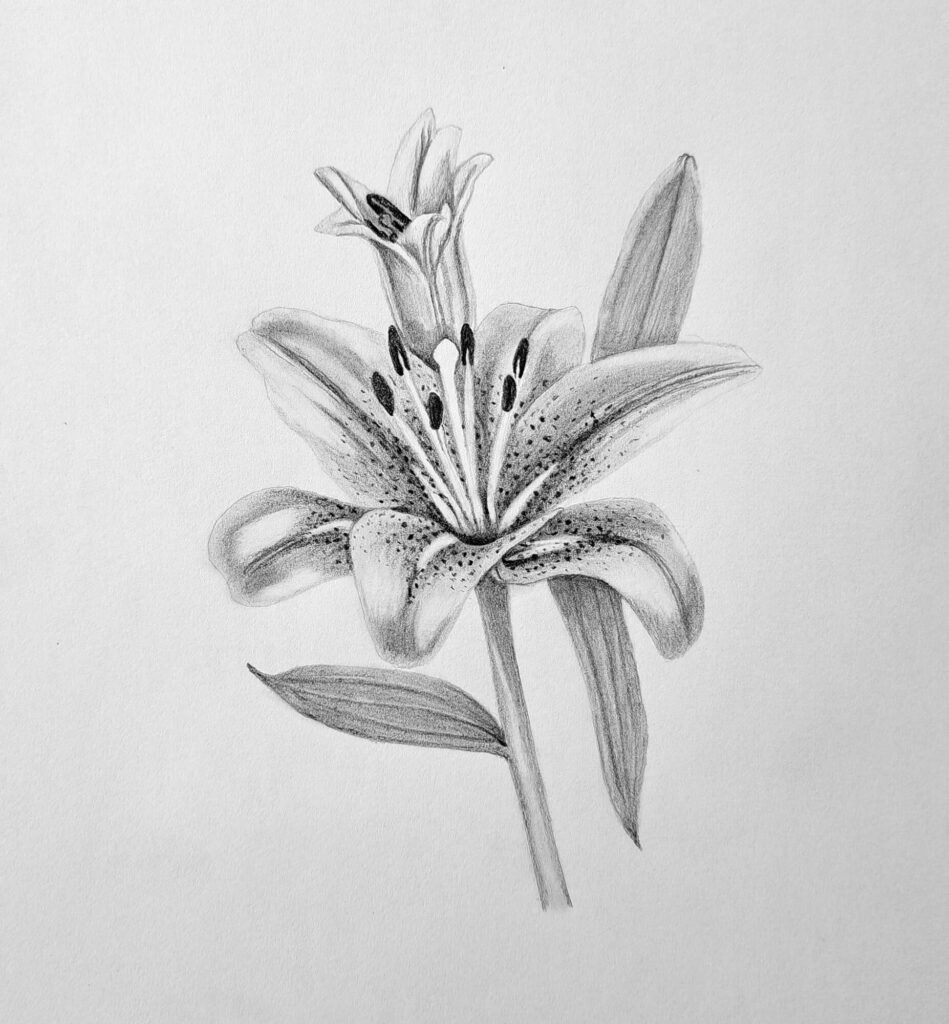
Let’s talk about lilies.
Let me interrupt you before you start wondering whether this is a botany class. It’s not.
If you’ve checked out my other tutorials, you’d know that quite often I like to discuss more about my drawing subjects, especially flowers.
Now, unlike most flowers, there are so many types of lilies in existence. It’s not our place to start exploring them all. Instead, we’re going to learn how to draw oriental lilies, which are known as the most flamboyant personalities within the world of lilies.
That said, I’ll walk you through simple steps for drawing a realistic lily flower from the first light sketch to the final shading.
Draw Tulip Flowers

If you didn’t know (of course you didn’t), I used to work in the floral industry several years ago. Including the breeding of roses, chrysanthemums, and alstroemeria. But none of those flowers had a bigger impact on my life than the tulips.
Their bold color and blooms are just mesmerizing.
Therefore, as an artist, I’m always finding deeper meaning in the usual and everyday items or things. Only then do these drawings make any sense. If you’re anything like me, you feel the same way, too.
So, let’s learn how to draw these gorgeous flowers using graphite pencils
Conclusion
It’s my goal to make tutorials for drawing any flower imaginable. While it’s nice to do it all alone, I recognize the drawbacks of not involving other artists.
Therefore, this is an excellent opportunity for you to share your ideas on drawing different types of flowers as long as they haven’t already been covered here.
I’ll also do my best to update this guide with your creatives.

